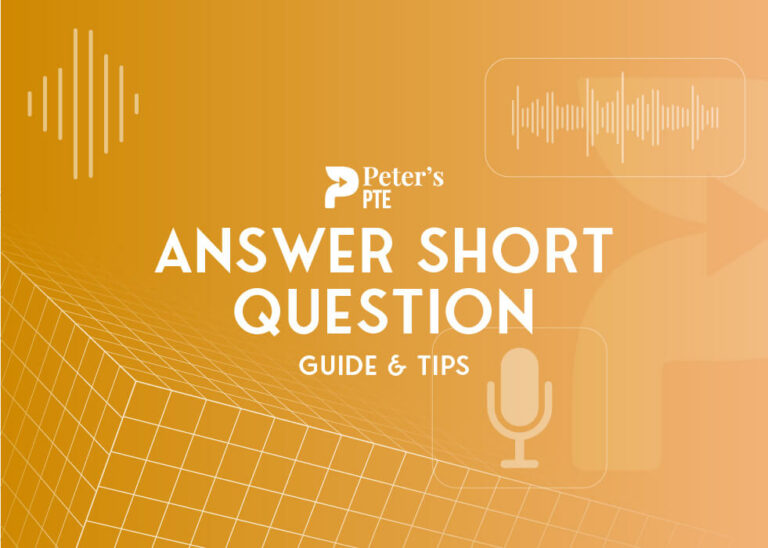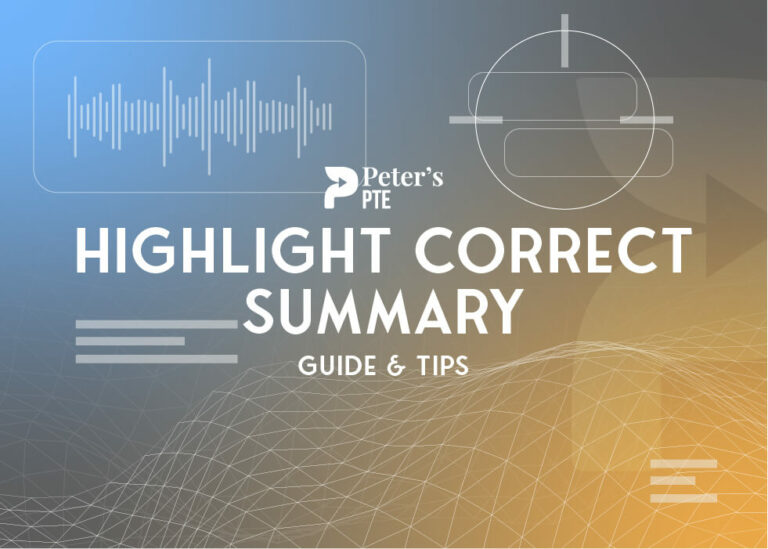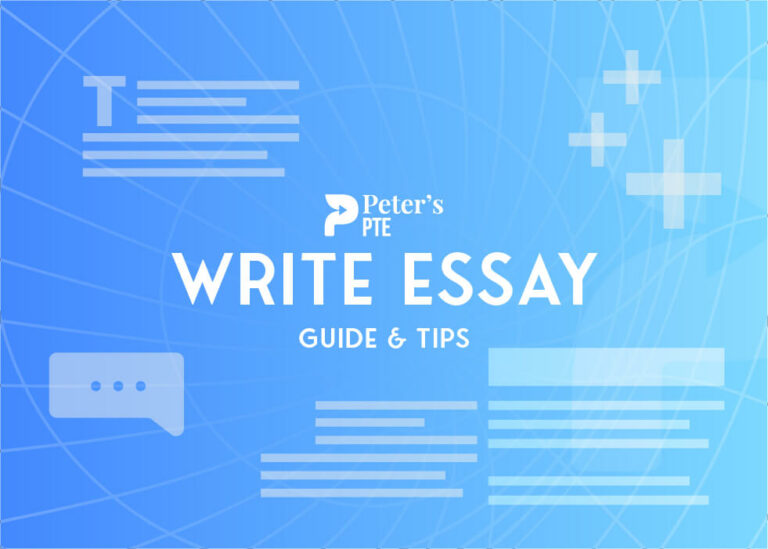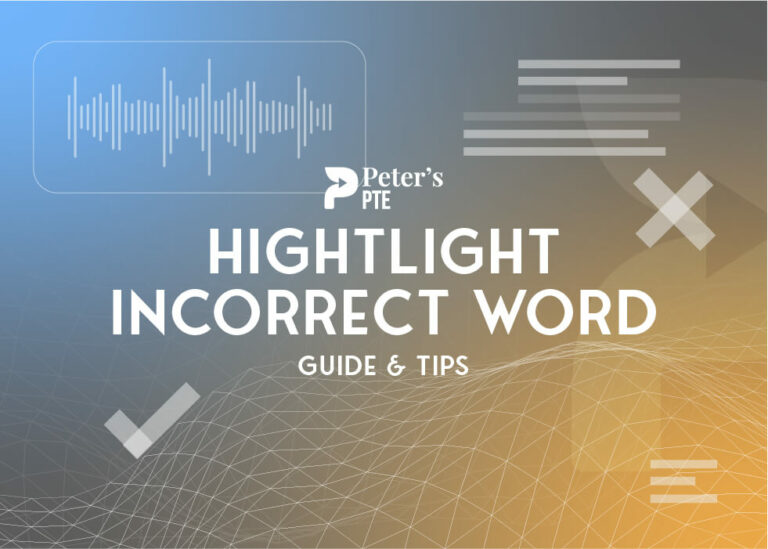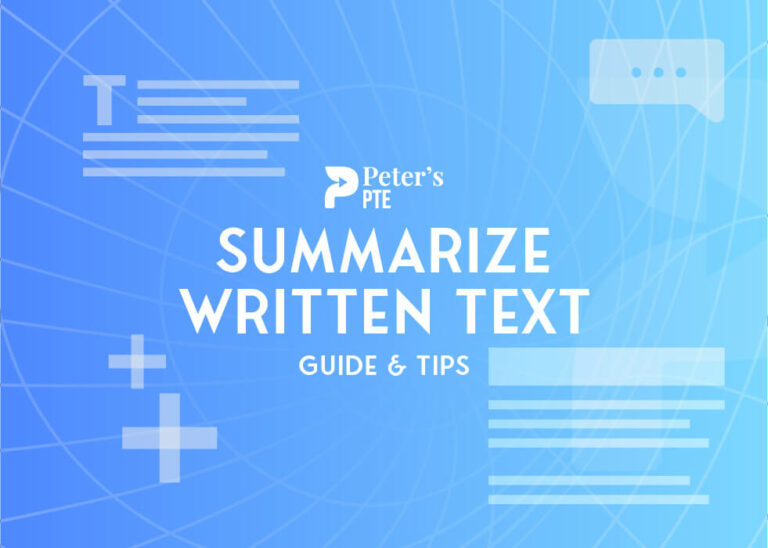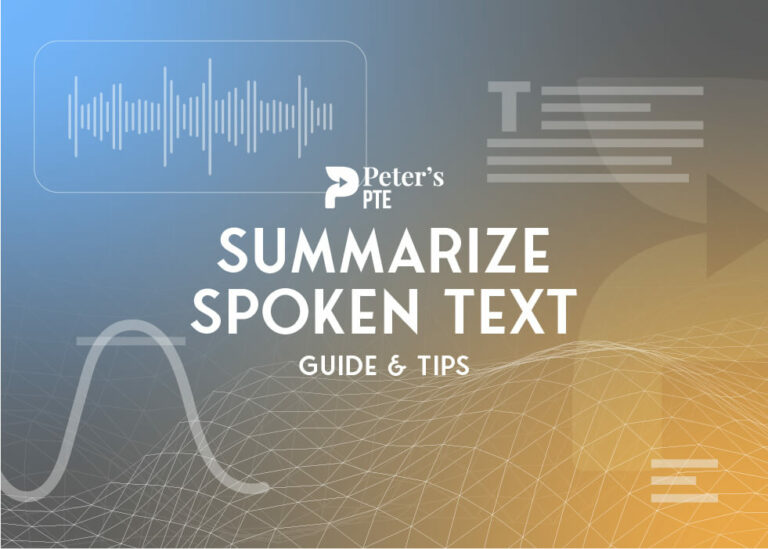The Pearson Test of English (PTE) Academic exam evaluates a candidate’s proficiency in English through various tasks in the speaking section, including the challenging yet highly scoring task of “Repeat Sentence.” In this blog, we will provide an in-depth guide along with valuable tips and tricks to help you excel in the PTE Repeat Sentence task.
Repeat Sentence Format
The PTE Repeat Sentence task is part of the Speaking Module and typically comprises 10 to 12 questions. It is essential to understand the structure and scoring criteria to maximize your performance in this task.
Structure
- You will hear a short sentence, usually lasting 3 to 9 seconds.
- After listening to the sentence, you have 3 seconds to prepare before the audio prompt begins.
- Your microphone opens after the audio ends, with a 1-second delay.
- You have 15 seconds to repeat the sentence you heard.
How Is It Scored?
The PTE Repeat Sentence task is scored based on three primary criteria: content, pronunciation, and oral fluency.
Scoring Factor
| Content | Oral fluency | Pronunciation |
|---|---|---|
| 3 points: 100% accuracy in repeating the sentence. 2 points: 50% or more of the sentence repeated correctly. 1 point: Anything between 0-50% of the original sentence repeated. 0 points: No match with the original sentence. | Correct pronunciation with minimal errors ensures a better score. | Fluency, appropriate pauses, and smooth speech are essential for a high score. |
Scoring Levels – Pronunciation and Oral fluency
Pronunciation
| Score Level | Scoring criteria |
|---|---|
| 5 – Native-like | All vowels and consonants are produced in a manner that is easily understood by regular speakers of the language. The speaker uses assimilation and deletions appropriate to continuous speech. Stress is placed correctly in all words and sentence-level stress is fully appropriate. |
| 4 – Advanced | Vowels and consonants are pronounced clearly and unambiguously. A few minor consonant, vowel or stress distortions do not affect intelligibility. All words are easily understandable. A few consonants or consonant sequences may be distorted. Stress is placed correctly on all common words, and sentence level stress is reasonable. |
| 3 – Good | Most vowels and consonants are pronounced correctly. Some consistent errors might make a few words unclear. A few consonants in certain contexts may be regularly distorted, omitted or mispronounced. Stress- dependent vowel reduction may occur on a few words. |
| 2 – Intermediate | Some consonants and vowels are consistently mispronounced in a non- native like manner. At least 2/3 of speech is intelligible, but listeners might need to adjust to the accent. Some consonants are regularly omitted, and consonant sequences may be simplified. Stress may be placed incorrectly on some words or be unclear. |
| 1 – Intrusive | Many consonants and vowels are mispronounced, resulting in a strong intrusive foreign accent. Listeners may have difficulty understanding about 1/3 of the words. Many consonants may be distorted or omitted. Consonant sequences may be non-English. Stress is placed in a non-English manner; unstressed words may be reduced or omitted, and a few syllables added or missed. |
Oral fluency
| Score Level | Scoring criteria |
|---|---|
| 5 – Native-like | Speech shows smooth rhythm and phrasing. There are no hesitations, repetitions, false starts or non-native phonological simplifications. |
| 4 – Advanced | Speech has an acceptable rhythm with appropriate phrasing and word emphasis. There is no more than one hesitation, one repetition or a false start. There are no significant non-native phonological simplifications. |
| 3 – Good | Most vowels and consonants are pronounced correctly. Some consistent errors might make a few words unclear. A few consonants in certain contexts may be regularly distorted, omitted or mispronounced. Stress- dependent vowel reduction may occur on a few words. |
| 2 – Intermediate | Some consonants and vowels are consistently mispronounced in a non- native like manner. At least 2/3 of speech is intelligible, but listeners might need to adjust to the accent. Some consonants are regularly omitted, and consonant sequences may be simplified. Stress may be placed incorrectly on some words or be unclear. |
| 1 – Intrusive | Many consonants and vowels are mispronounced, resulting in a strong intrusive foreign accent. Listeners may have difficulty understanding about 1/3 of the words. Many consonants may be distorted or omitted. Consonant sequences may be non-English. Stress is placed in a non-English manner; unstressed words may be reduced or omitted, and a few syllables added or missed. |
Always Remember
- Aim to finish your response three seconds before the time runs out, ensuring a smooth and confident delivery.
- Errors = replacements, omissions and insertions only. Hesitations, filled or unfilled pauses, leading or trailing material are ignored in the scoring of content
- Pay close attention to the sequence of words in the sentence. The correct sequence is of paramount importance. A misplaced word or phrase could cost you valuable marks, so ensure your response maintains the original order.
- To convey the meaning accurately, utilize the right pitch for emphasizing specific words or expressions. Remember that a rising pitch indicates the beginning of a sentence, while a falling pitch signifies the end. This vocal technique can significantly enhance your performance.
- Avoid taking notes during the Repeat Sentence task. The limited time available makes it impractical to jot down the sentence. Instead, focus on listening, understanding, and repeating the words effectively.
- Never skip words when repeating a sentence, even if you can’t remember every part of it. Strive to reproduce as many words as possible. Leaving a question unanswered should be your last resort. Even repeating a portion of the sentence can earn you valuable marks.
- Improve your pronunciation and oral clarity through consistent practice. It’s beneficial to revisit practice materials multiple times, especially those that feature real exam sentences. By honing your articulation and clarity, you’ll feel more confident and perform better in the actual exam.
Repeat Sentence Practice Tips
Listening Tips
- Actively Listen: Focus completely on the sentence being played and visualize the words and their meanings for better retention.
- Optional Note-taking: Use the brief 3-second preparation time to jot down concise notes, focusing on keywords or phrases to trigger your memory.
- Emphasize Meaning: Understand the sentence’s overall meaning rather than memorizing individual words for more effective recall.
- Stay Relaxed: Maintain composure on test day to prevent nervousness from negatively impacting your performance.
- Expand Vocabulary: Enhance your vocabulary with both academic and everyday words to better recognize and remember words in sentences.
Speaking Tips
- Speak Naturally: Avoid imitating the speaker’s accent. Use your natural pronunciation and intonation, boosting your confidence and pleasing the computerized scoring system.
- Appropriate Speed: Maintain a normal pace within the 15-second limit. Rushing can lead to errors, while speaking too slowly affects your fluency score.
- Avoid Pauses and Hesitation: Start speaking confidently as the microphone opens one second after the audio ends. Lengthy pauses, hesitations, or filler words like “umm” and “err” can negatively impact your oral fluency score.
- Guess If Unsure: If uncertain about a word or phrase, make an educated guess and proceed with confidence. Leaving a question unanswered results in zero points, but attempting it offers a chance for partial credit.
- Consistent Practice: Regular PTE Repeat Sentence practice, including listening and repeating sentences, enhances your memory and speaking skills. Work on refining your grammar to improve overall performance.
- Practice with a Partner: If possible, practice with a speaking partner, preferably a native English speaker. Partners can offer valuable feedback to help enhance your language skills.
Challenges
Complex, lengthy sentences can confuse the AI model, leading to misunderstandings and incorrect responses. Also Rapid speech or extreme slow speed may not give the AI model enough time to process and comprehend the message, resulting in word misinterpretations. Excessive background noise, like conversations or ambient sounds, hinders the AI model’s ability to grasp the main voice accurately.
Conclusion
The PTE Repeat Sentence task is both challenging and rewarding. Success in this task relies on your ability to listen attentively and reproduce sentences with accuracy, pronunciation, and fluency. By following the tips and tricks provided in this guide, you can boost your confidence and performance in the PTE Repeat Sentence task.
Remember to practice actively, focus on the meaning of the sentences, and speak naturally. Additionally, working on your vocabulary and pronunciation will enhance your overall performance. With dedicated practice and the right approach, you can excel in the PTE Repeat Sentence task and achieve a high score in the PTE Academic exam. Good luck!

